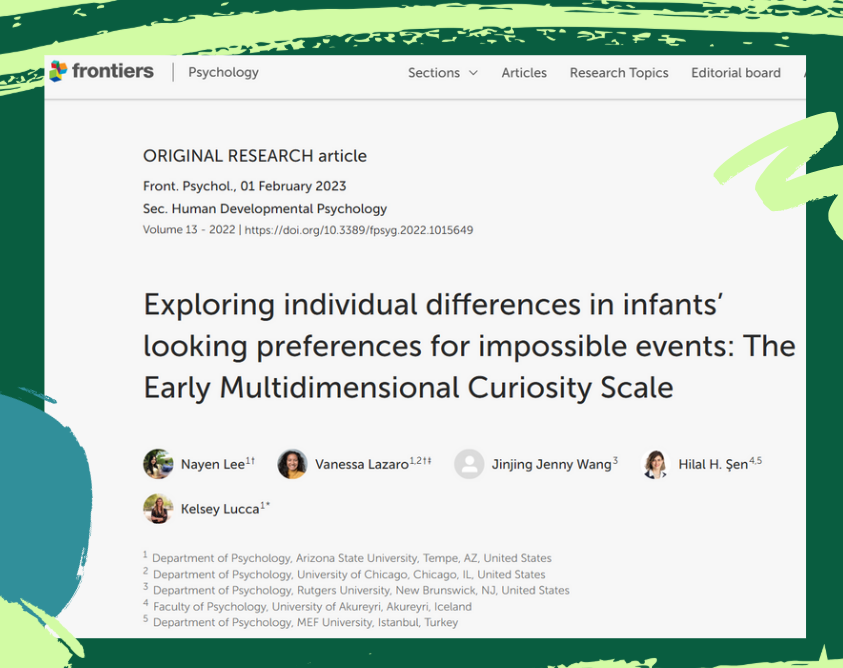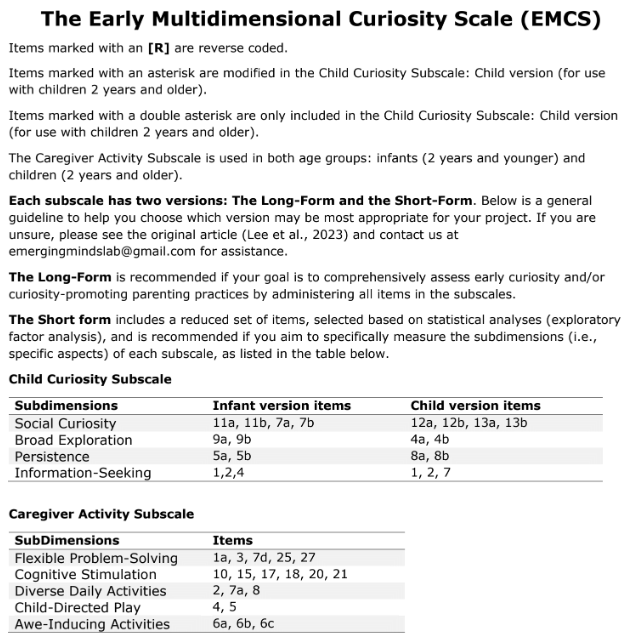the early Multidimensional Curiosity Scale (eMCS)
Young children express their curiosity in many different ways, and caregivers support it through a range of behaviors. The Early Multidimensional Curiosity Scale (EMCS) is a comprehensive tool designed to capture this diversity by assessing both early curiosity and curiosity-promoting parenting. The EMCS consists of two subscales: the Child Curiosity Subscale and the Caregiver Activity Subscale. For more information about how the EMCS was developed and validated, please see Lee et al. (2023).
The Child Curiosity Subscale measures four distinct dimensions of children’s curiosity: Social Curiosity, Broad Exploration, Persistence, and Information-Seeking. To account for developmental differences, it includes two age-specific versions: the Infant Version (for children younger than 2 years) and the Child Version (for children aged 2 years and older).
The Caregiver Activity Subscale assesses five key dimensions of caregivers’ curiosity-related parenting behaviors: Flexible Problem-Solving, Cognitive Stimulation, Diverse Daily Activities, Child-Directed Play, and Awe-Inducing Activities. It can be used regardless of the child’s age.
The Cross-Cultural Project of Curiosity
What do curiosity and curiosity-promoting parenting look like across different cultures?
Our ongoing cross-cultural project (Lee et al., in prep), conducted in collaboration with three research teams across South Korea (Lead PI: Dr. Sang-Ah Lee at Seoul National University), Turkey (Lead PI: Dr. Hilal H. Şen at University of Akureyri), and the United States, seeks to answer this question.
As part of this effort, the EMCS has been translated into Korean and Turkish using standard back-translation procedures.





